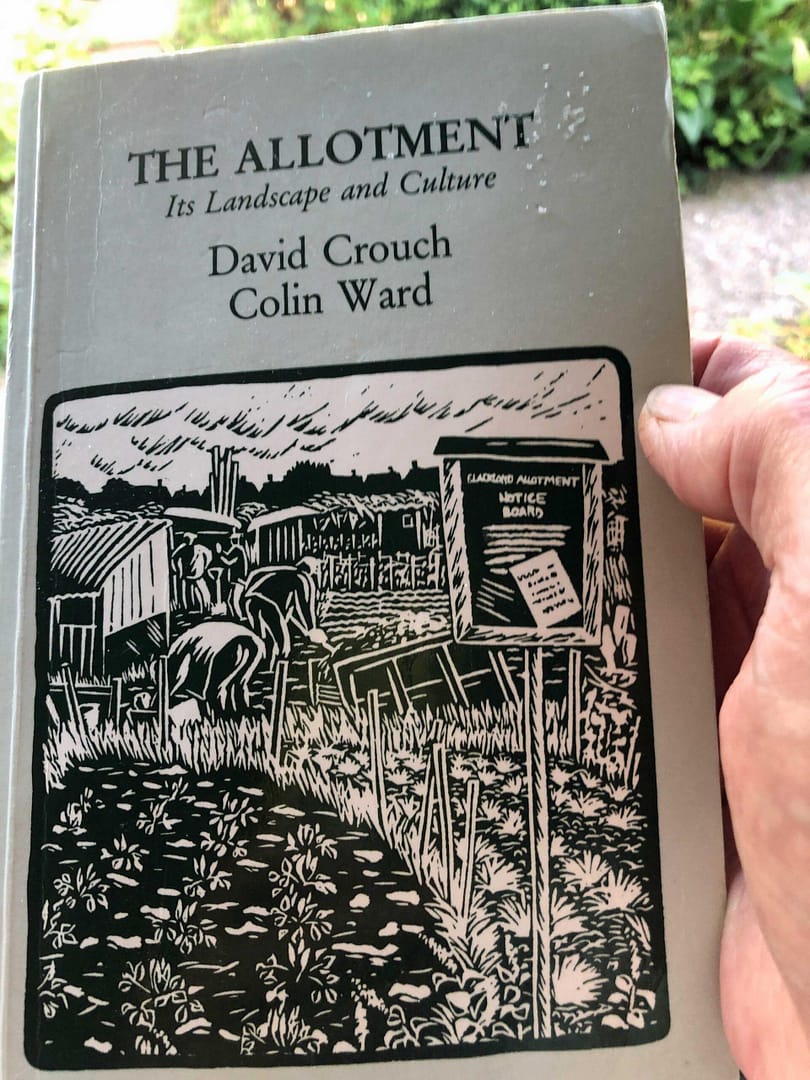This one really is a joy; written in 1988 (my copy dates from 1997) by Professor of Cultural Geography, David Crouch and Colin Ward, British anarchist writer and editor. The cover is a lino-cut by a Japanese designer, Kaoru Miyake, another ex-UEA alumni as well.
Allotmenteering started out as a means of active dissent. The Diggers, agrarian socialists lead by Gerrard Winstanley and William Everard, came to fame in seventeenth-century Surrey as they helped galvanize the fight against the Enclosure Acts, legislation which stole hitherto accessible land from the peasantry and thus deprived ordinary people of easy access to utilise this land. And the idea spread, first in England, then through Europe and then across the world.
Allotments are sanctuaries. A way to grow things — often found on the edges of suburbia or even deep in inner cities — in a rebuttal of the way that ordinary life is getting ever more stressful and expensive. There, this ‘simple’ urge to grow-your-own or become self-sufficient, brings one closer to a community of people, wildlife and plants that are often wildly more diverse than the very cities and towns surrounding them. An allotment is a pocket-sized utopia; a green place where anyone can occupy a, uniquely theirs, piece of land and (sometimes easily, sometimes harder!) grow pretty much anything with a freedom of expression that makes my heart sing.
The front cover of the book has a delightful B&W lino-cut by Kaoru Miyake that is the essence of an allotment. People bent over digging & weeding or leaning on their spade for a break, rows of carefully tended plants & vegetables, stakes to support tomatoes, old poles and wood, littering the area, to be used to build beds or strengthen, little sheds to store & save and shelter. A notice-board at the very front. It’s canon…
